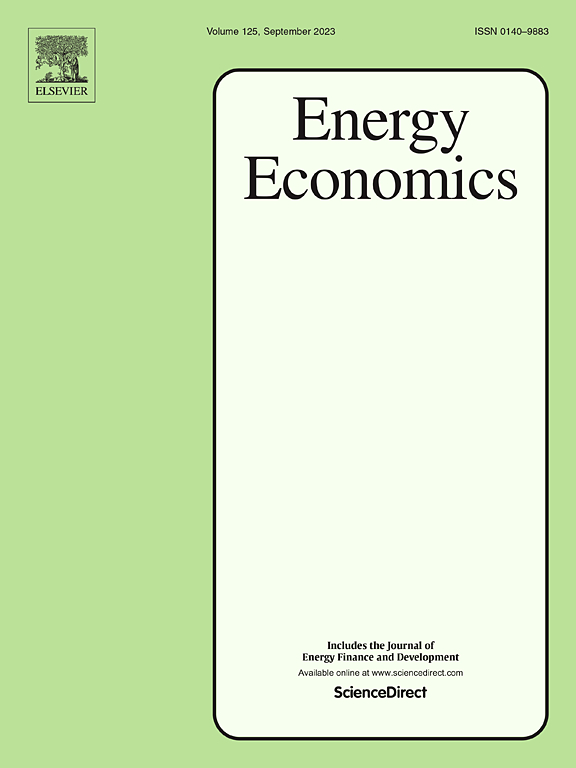清洁产品推广中的补贴削减政策:预先宣布还是动态的?
IF 14.2
2区 经济学
Q1 ECONOMICS
引用次数: 0
摘要
政府经常使用购买补贴来推广清洁产品,如屋顶太阳能光伏系统和新能源汽车,旨在实现清洁发展。然而,购买补贴增加了政府的财政负担,并造成消费者过度依赖,消费者因预期未来补贴会更高而推迟购买。为了降低政策成本,减少消费者的延迟购买,政府试图实施逐步降低补贴水平的补贴削减政策,有两种选择:预先宣布的补贴削减(PS,即预先宣布未来的补贴计划)和动态削减补贴(DS,即政府宣布下降趋势,但动态调整补贴水平)。我们采用一个两期Stackelberg博弈模型来研究推广清洁产品的最优策略。PS和DS都缓解了延迟购买,但政府的补贴策略不同。在PS下,政府采取一致的补贴策略或递减的补贴路径,减少了财政成本,但以牺牲清洁产品的总销量为代价。相比之下,在动态补贴制度下,政府在两个时期内保持一致的补贴水平,这反而增加了清洁产品的总采用率,与动态补贴设置旨在保持政策灵活性的直觉相矛盾。此外,我们的综合比较揭示了一个政策选择困境:政府应该选择PS来防止延迟购买,而DS来提高清洁产品的采用。我们建议根据清洁产品的市场渗透率选择合适的方法:当清洁产品的销量足够高时,PS似乎更有利,而DS则相反。本文章由计算机程序翻译,如有差异,请以英文原文为准。
Subsidy reduction policies in clean product promotion: Pre-announced or dynamic?
Governments often use purchase subsidies to promote clean products, such as rooftop solar photovoltaic systems and new energy vehicles, aiming for clean development. However, purchase subsidies increase governments’ fiscal burden and create consumer over-reliance, with consumers delaying purchases in anticipation of higher future subsidies. To reduce policy costs and lessen consumers’ delayed purchases, governments attempt to implement a subsidy reduction policy that gradually reduces subsidy levels, with two options: pre-announced subsidy reduction (PS, where future subsidy plans are pre-announced) and dynamic subsidy reduction (DS, where governments announce a downward trend but adjust subsidy levels dynamically). We employ a two-period Stackelberg game model to investigate the optimal policy for promoting clean products. Both PS and DS alleviate delayed purchases, but the government’s subsidy strategies differ. Under PS, the government adopts a consistent subsidy strategy or follows a decreasing subsidy path, which lessens fiscal costs but at the expense of total sales of clean products. In contrast, under DS, the government maintains a consistent subsidy level over two periods, which rather increases the total adoption of clean products and contradicts the intuition that dynamic subsidy setting is meant for maintaining policy flexibility. Moreover, our comprehensive comparisons reveal a policy choice dilemma: the government should choose PS to prevent delayed purchases but DS to enhance the adoption of clean products. We suggest choosing the appropriate approach based on the market penetration of clean products: PS seems more favorable when sales of clean products are sufficiently high, while the opposite is true for DS.
求助全文
通过发布文献求助,成功后即可免费获取论文全文。
去求助
来源期刊

Energy Economics
ECONOMICS-
CiteScore
18.60
自引率
12.50%
发文量
524
期刊介绍:
Energy Economics is a field journal that focuses on energy economics and energy finance. It covers various themes including the exploitation, conversion, and use of energy, markets for energy commodities and derivatives, regulation and taxation, forecasting, environment and climate, international trade, development, and monetary policy. The journal welcomes contributions that utilize diverse methods such as experiments, surveys, econometrics, decomposition, simulation models, equilibrium models, optimization models, and analytical models. It publishes a combination of papers employing different methods to explore a wide range of topics. The journal's replication policy encourages the submission of replication studies, wherein researchers reproduce and extend the key results of original studies while explaining any differences. Energy Economics is indexed and abstracted in several databases including Environmental Abstracts, Fuel and Energy Abstracts, Social Sciences Citation Index, GEOBASE, Social & Behavioral Sciences, Journal of Economic Literature, INSPEC, and more.
 求助内容:
求助内容: 应助结果提醒方式:
应助结果提醒方式:


